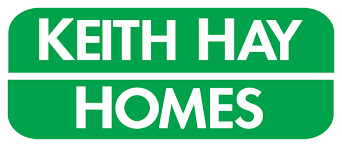Given the drastic nature of the government’s Housing Package, it is hardly a surprise to see rental (un)affordability being thrust into the forefront of our national psyche.
In the immediate aftermath of the 23rd March announcement, social media was ablaze with talks of a wholesale rent spike. Uncertainty and fear dominated the moment.
And trigger-happy-finger-tapping housing market stakeholders (landlords, tenants, first home buyers, homeowners, industry professional) simply reacted.
Should they have right there and right then? Maybe, maybe not. Was it human to though? Absolutely. Are these comments precursors to what is to come?
No, not if history is anything to go by.
The media, not content with sitting idly by, took a big bite out of that juicy sensationalism pie, cherry-picked and held up the most inflammatory rent
increase posts as some kind of landlord manifesto. A real modern-day Nostradamus it is. Sure, Facebook is where we all go for unfiltered truth. Jacinda
seemed unperturbed. Grant shrugged and told tenants to look elsewhere. Opinion columnists eager to position themselves as ‘one of the good ones’ went
full #HolierThanThou by decrying the moral decrepitude of any landlord who dares to even contemplate a rent hike as if economic imperative is never a factor of rental ownership.
All the ingredients are in place to ignite talks of rent control, someone just needs to light a match.
And light it Renters United definitely will come Sunday when it launches its poster campaign:

The visual is, without a doubt, a powerful indictment of the state of renting in New Zealand. Anyone with half a heart would find it an outrage to see
rents outpacing wages by nearly two-fold. But the further we look, the less compelling RU’s narrative is. A comb-through of RU’s Fair Rent Now campaign website yields no source citation of the campaigner’s wage growth and rent growth figures. Are they sourced
from a government department? Are these year-on-year growth or cumulative? Why wages? Why not household income given it is not uncommon for there to
be more than one income earner in a rented household? Why a 2010 start date? Has RU simply created its own index? Why has RU chosen to be coy? With
numbers this powerful, surely RU would not allow the integrity of its position to be impugned by being less than transparent about its methodologies.
Juxtaposing this very emotive narrative against CoreLogic New Zealand’s latest Housing Affordability Report (February 2021 dated Q4 2020) leads to even more questions about exactly
how affordable it is to rent. After interlacing its own data with that of figures sourced from Infometrics, the Reserve Bank of NZ and MBIE, CoreLogic’s
observation is that housing affordability for renters is ‘about normal at present’ tracking at the usual 20% of household income since at least as
far back as 2004.

The data giant goes on to state in the report that ‘over the long run, landlords can’t always pass on higher costs to tenants in the form of rent increases
– in turn, because tenants’ affordability is anchored by the pace of their wage increases (which has recently been fairly low).’ These observations
are very much in line with the acute awareness long-term landlords have of the market’s affordability ceiling. Simply put, renting is not a linear
extraction economy where every time the landlord spends a cent he could rightly expect to receive at least an extra cent in return from his tenant.
Landlords who have successfully held properties for the long term understand that to flirt with a tenant’s accommodation budget is to court vacancy
and overcrowding at the rental property. Neither are terribly palatable.
We are not suggesting that any talks of rental unaffordability are nothing but smoke and mirrors. God knows the disparate information out there creates
nothing but absolute confusion. What we are saying is that since affordability goes to the heart of renting as a lifestyle (tenant’s) and a
business (landlord’s) surely the right approach is for renters and rental providers to work together. APIA members have repeatedly expressed a preference
for investing in residential rental properties that is borne out of a genuine desire to provide housing in the community as well as an acceptance that
property (above all else) gives their families a viable pathway towards financial freedom. This perspective leads to the inevitable but not unwelcomed
conclusion that landlords and tenants coexist in symbiosis. When renting is more affordable for tenants, owning the rental becomes more affordable
for the landlord. Housing affordability is pivotal to social outcomes. Landlords and tenants can do a great deal of good if we work together to address
the big systematic challenges of renting. And that has to start with casting aside political motivation in order to study and tackle affordability
through the lens of unassailable facts.














Add Comment